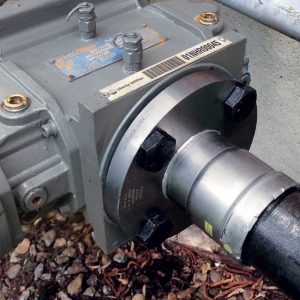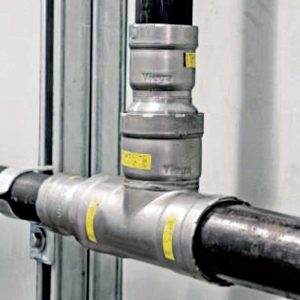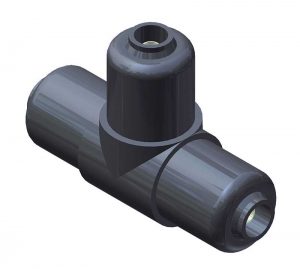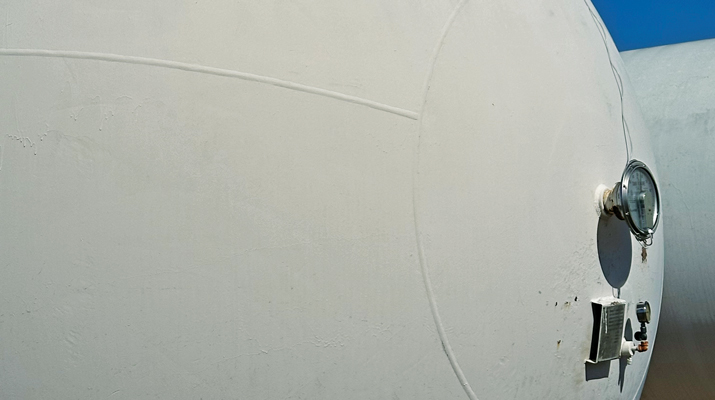Using press-connect fittings to join pipes
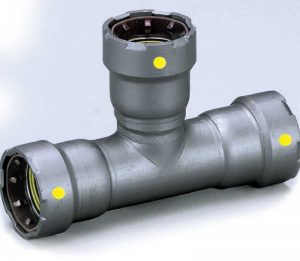
The 2018 edition of the NFPA 54 code will include press-connect fittings as an approved means for use in piping systems inside buildings. Photos courtesy of Viega
It’s been more than a year since press-connect fittings became part of the National Fire Protection Association (NFPA) 58 code. Why were these fittings approved and what impact are they having on the propane industry?
Bruce Swiecicki is senior technical adviser for regulatory and technical services at the National Propane Gas Association (NPGA). Swiecicki serves on the committee that provides input into standards development.
Swiecicki says the 2018 edition of the National Fuel Gas Code (NFPA 54) will include press-connect fittings as an approved means for use in piping systems inside buildings. The 2017 edition of NFPA 58 also has new text that permits press-connected fittings, complying with ANSI/CSA 6.32 (LC4).
“A product that is tested and listed to a nationally recognized performance standard provides the committee with an increased level of confidence the product will perform safely,” Swiecicki says of the committee’s typical approval process. “That’s why press-connect fittings were accepted into both codes as a viable alternative.”
Swiecicki say the NPGA was supportive of the code changes that allowed for the implementation of press-connect fittings.
“We are in favor of the code providing as many options as possible, as long as they result in safe installations,” Swiecicki says.
Press technology
Viega, a German-based company, is an innovator in press technology. It makes more than 1,300 press-fitting choices in multiple materials, including copper, copper nickel, cross-linked polyethylene, stainless steel and carbon steel.
While press technology has been widely used in Europe for many years, it was not used in the United States until 1999. At the time, the press technology did not include a feature that helps installers identify unpressed connections – that feature was added in 2005.
The battery-powered press tool looks like a large drill with a clamp on the end of it. Different clamps are offered for each pipe size. The fitting is placed on the pipe. The press tool is then placed on the fitting and, with the press of a button, a mechanism clamps on the pipe. Then, the crimp is set and the mechanism will do the rest so the pipe is closed off and leak free.
With these fittings, there is no need to thread and tighten. If you are working with copper, there is no need to solder. No oil is required in the installation, so press-connect fittings are also clean.
Currently, Viega MegaPressG and ProPressG, the trade names for its press-connect fittings, are designed for fuel and gas applications. They can be used for ½ in. to 2 in. pipes. A 4-in. fitting will be available in early 2018. While the up-front costs may be challenging for some – the press machine costs between $3,000 and $5,000 – they should come down as press-connect fittings become more widespread, say those familiar with the product.
From the field
Nick Nodae is the district manager at Viega in north central Florida. He visits end users, engineers and owners, demonstrating the product to spark interest. When Nodae meets with contractors, he allows them to borrow the necessary tools for their first job so they can understand the process using press technology.
“It works the same way all day, every day,” Nodae says. “It does not get tired and makes things quicker, easier and safer for the installer. It also provides a 60 to 80 percent labor savings for the contractor.”
Jimmy Daley is a branch manager at Blossman Gas. He and his team used press-connect fittings for an install on an 11,000-sq.-ft. house with 14 gas appliances. They allotted two weeks for the process and saved half the time by using press-connect fittings.
“The press tool is simple to operate and comes with an instruction guide. Once you do one fitting, you can do it again easily,” Daley says. “After using the press-connect fittings, my guys said, ‘I don’t care what you have to pay for this; you need to get it.’”
Mike Hopsicker, president and CEO of Ray Murray Inc., notes it can be a challenge to find people in the propane industry who can sweat copper pipe, but training on the press tool comes easy.
John Murray, one of the current owners of Ray Murray Inc., says, “Press-connect fittings make for a much cleaner and quicker installation. You can lay out the whole job before you have to make the finished connections.”
“We just picked up the product line within the past year,” Hopsicker adds. “We like to offer our customers things we think they need, and we believe this product could benefit them very much.”
Advancements
The propane industry is not known for rapid development or change. Nodae recounts the history of piping in the plumbing industry. There was galvanized pipe in the 1950s and 1960s. It took years to transition to copper. When PVC came along, it was a tremendous leap. Press technology is the next evolution.
Nodae estimates that press-connect technology accounts for just 12 to 15 percent of the copper market in the United States. Sales are currently upwards of half a billion dollars. Like any new technology, its use will spread with education and training, he says.
“People are not always comfortable with new technology, and it makes them nervous. However, as press technology gets additional certifications and more people are exposed to it, I believe we’ll see a rapid turnover,” Nodae says.
Daley feels technology is good for the propane industry. He also notes that more installations mean more propane being burned by customers.
“I think it’s the new technology of the future, and everyone will turn to it,” Daley explains. “For safety alone, consider how many times people get hurt in some fashion, like a hernia, from tightening.”
Press-connect fittings are en route to clearing the regulatory hurdles. This development, along with the benefits – speed, cleanliness and ease of use – have press-connect technology poised for propane industry growth.
Push to fit
Like press-connect fittings, push-to-fit lowers the cost of labor and installation. However, no special tools are needed. You simply cut off the plastic to create a good square edge and push on the fitting.
The push-to-fit connections, notes Bruce Montroy, senior vice president of sales at Bergquist, are used for polyethylene gas lines that run underground, typically from tank to building.
“The two fittings are for different types of installations. The press-connect is the only one approved for inside the building,” he says.
Bergquist says it will pursue press-connect fittings in the future. The company believes there’s a market as the propane industry adopts them.
Montroy says there are regional variances in the industry. In the Midwest, not many propane marketers install indoor piping, he notes. In the East, propane marketers perform the greatest number of indoor piping installs. Bergquist’s primary market is east of the Rocky Mountains.








